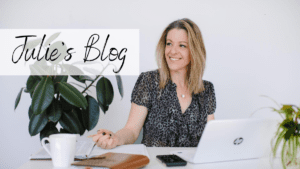You know that uncomfortable feeling you get? It often happens after you have had an interaction with someone and the result wasn’t all that ideal?
It’s a feeling in your gut and it stays with you a while. You try to budge it by rationalising your own behaviour and also by criticising the other person. But the feeling doesn’t budge. It sticks there, making you distracted and cranky.
Gosh, I know this feeling well. And, it happened again just the other day.
People were demanding my time while I was attempting to get an important project completed and I became frustrated and annoyed. I did not communicate effectively and I certainly felt the resulting situation would have been better had it not been for my agitated response.
Over the years, I have come up with a process that removes this feeling quickly and completely!
First of all, there needs to be a recognition that this feeling is our inner-self telling us that we could be better. Rather than cast an accusing finger outward and blame others for provoking or upsetting us, we must embrace the opportunity to turn that finger around and look inside ourselves.
It is uncomfortable and sometimes confronting to identify errors in judgement and our ineffective management of a situation. That is why our default response is often child-like, seeking someone else to blame.
The second step is to take responsibility for our actions. We need to remind ourselves that no one makes us feel or do anything. We choose or create every action, behaviour, feeling, attitude and word.
The third step is to turn back time. We can’t do this, of course, but if you could, what would the better ‘you’ have done? How would the more-evolved, wiser ‘you’ have responded?
The final step is to clearly identify the perspective you would hold next time. How you would improve your management of the same scenario should it present itself again?
If you are having trouble with the final step, simply reverse engineer the scenario.
For example…
1 – RESULT
I want the result to be that both parties leave the interaction feeling happy feelings for each other and to share a deeper understanding of each other. That we are each better off for the interaction. That the interaction helped build deeper trust, rather than damage existing trust.
2 – ENVIRONMENT
What environment would I need to create in order to realistically achieve my desired result? What words would I need to say, how much would I need to listen, what attitude would I need to display to the other person for them to come with me to the desired result?
3 – INTENTION
Considering my desired result and the environment that I need to create, what intention do I need to adopt in order for this to happen? Surely, if my intention is to be heard, I will not listen. If my intention is for the other person to ‘do what I tell them and get on with their job’ then I will fail in my desired result of the other person leaving our interaction happy and with a deeper sense of trust in me.
I have discovered that moving through the above process is helpful. However, it is when I make a firm assurance to myself that next time I will be better by displaying my now more thoughtful perspective and resulting behaviour that my uncomfortable feeling dissipates.
One additional attitude that helps this process is the willingness to forgive myself for any mistake that I made during the interaction. I have written in other blogs about the need as human beings in our growth and development to make mistakes. They are uncomfortable, but they are necessary.
Using this process of improvement has actually become one of my most successful self-development processes. If you ever struggle with those uncomfortable feelings – those callings from your inner self – I encourage you to move through my process and see if it works for you.
